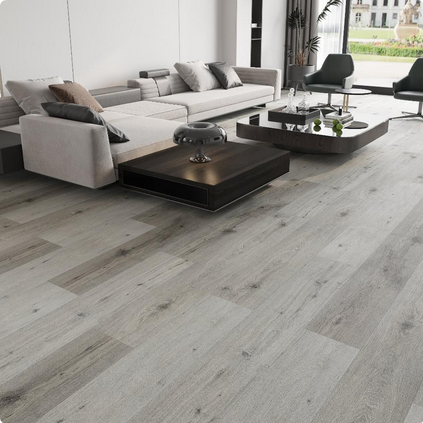
Author, Written by: P. Hirani (Wood flooring Expert)
Living by the UK coast has its perks stunning views, fresh breezes, and a peaceful seaside lifestyle. However, the same salty air that makes the coast so appealing can also be tough on your home, especially your flooring. Salt air, combined with high humidity, can accelerate wear, cause corrosion in certain materials, and even impact the colour and texture of your floors over time. Choosing the right flooring for coastal conditions is essential to keep your home looking its best.
Why Coastal Conditions Affect Flooring
Coastal homes in places like Cornwall, Brighton, or Scarborough face more than just sand being tracked indoors. The constant exposure to salty air can:
-
Attract moisture into your home, raising humidity levels.
-
Speed up deterioration of certain floor finishes.
-
Encourage warping or swelling in natural wood floors.
-
Leave a fine salt residue on surfaces, dulling their appearance.
Selecting materials that can resist moisture, are easy to clean, and won’t lose their finish is key.
Top Flooring Choices for Coastal Areas
1. Luxury Vinyl Tile (LVT)
LVT/Vinyl is one of the most practical options for coastal homes. Its waterproof construction means it won’t warp or swell in humid air. It also resists salt residue better than natural materials, making it ideal for hallways, kitchens, and living areas.
-
Pros: Waterproof, durable, easy to clean.
-
Tip: Choose a textured surface to disguise sand or small debris until you have time to sweep.
2. Porcelain or Ceramic Tiles
For areas prone to wet shoes or dripping swim gear, porcelain or ceramic tiles are hard to beat. They are virtually immune to salt damage and moisture, and they clean up easily.
-
Pros: Highly resistant to moisture and salt, wide style options.
-
Tip: Opt for slip resistant finishes for added safety.
3. Engineered Wood Flooring
If you love the look of timber but worry about the coastal climate, engineered wood is a smart choice. Its layered construction is more stable than solid wood, making it less prone to warping in damp conditions.
-
Pros: Real wood appearance, better stability in humidity.
-
Tip: Use a hardwearing lacquer finish for added protection against salt residue.
4. Laminate Flooring
High quality laminate can be a budget friendly option for coastal properties. While not as moisture resistant as LVT/Vinyl or tile, modern laminates have water resistant cores that can handle short term exposure.
-
Pros: Cost effective, good scratch resistance.
-
Tip: Keep mats at entrances to prevent excess moisture and salt from getting in.
Maintenance Tips for Coastal Flooring
-
Regular sweeping: Salt crystals are abrasive and can scratch floors if left unattended.
-
Damp mopping: Use a well wrung mop with a gentle cleaner to remove salt residue.
-
Entryway mats: Place them at every door to catch sand and moisture before it reaches your floors.
-
Seal where possible: Apply protective sealants to materials like wood to extend their lifespan.
Final Word
When living by the UK coast, your flooring needs to be as resilient as it is beautiful. Materials like LVT, porcelain tile, engineered wood, and high quality laminate offer a mix of durability, style, and easy care to handle the challenges of salty air and high humidity. With the right choice, your floors can withstand coastal living while still looking stylish year after year.
About Author:
Peter H. is a flooring product expert who knows all about different types of flooring materials. He shares his knowledge in blogs to help readers make the best choices for their spaces.
